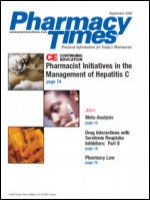Publication
Article
Pharmacy Times
Delivery of progesterone...
How can I extemporaneously compound a vehicle for transdermal delivery of progesterone
Click Here For The Answer ----------->
[-]
Various vehicles are employed by pharmacists who compound preparations for transdermal delivery of active ingredients. United States Pharmacopoeia?grade active ingredients?such as progesterone, testosterone, and various estrogens?are available for the preparation of ?bioidentical? hormone formulations.
One method involves the use of a gel that exhibits inverse temperature-viscosity behavior: it becomes more viscous as it is warmed, providing a sticky mass when applied to the skin. Sometimes referred to as Polox (a trademark for reconstituted 20% and 30% aqueous gel with preservatives), it is made from the gel basis Pluronic F127NF with preservative.
Pluronic F127NF is a trade name for a particular Poloxamer resin. Poloxamers are specified in the NF (monograph products) as excipients. As noted, the gel is a liquid at refrigerated temperatures and becomes more viscous upon warming: storage in a refrigerator will make compounding with it easier. To this gel is added a penetration enhancer to make PLO, a commonly used pharmacy name for Pluronic Lecithin Organogel, which consists of Poloxamer (Pluronic) gel with added lecithin and isopropyl palmitate or isopropyl myristate.
One lecithin?isopropyl palmitate system is known commercially as Lipoil and is a 50:50 (w/w) eutectic mixture of solid lecithin and liquid isopropyl palmitate (liquid and solid, respectively, at room temperature). It is a liquid at room temperature but may become solid on cooling. It is stored at room temperature and is thawed in a water bath if received in a solid condition.
When applied to skin under occlusive dressing (such as Tegaderm or OpSite), the system provides a thick gel with penetration enhancers. PLO has a tan and ?creamy? appearance. It is not a clear ?gel? per se, but it is a pharmaceutical gel. One might be hard pressed to discern the difference between this base and a ?cream.? A pharmacist, however, will quickly note a distinct difference in texture, mobility, and the like.
A convenient method for preparation of the gel is given in the following general formulation for compounding a PLO gel?based product. This formulation is calculated to make 100 mL.
Ingredients
Active ingredient
XX.XXX mL
Suitable solvent
XX.XXX mL
Lipoil
24.000 mL
Polox 20% gel
qs ad 100.000 mL
Supplies
Balance with weights and weigh boats Graduated cylinder
Mortar and pestle or 60-mL and 140-mL syringes with Luer lock to Luer lock connector Oral syringes and caps and Luer lock to oral slip connector
Procedure
Mortar and Pestle Method
- Weigh/measure ingredients.
- Mix the active ingredient(s) with a small amount of solvent appropriate to the solubility of the active ingredient (eg, ethoxy diglycol, ethyl alcohol 200 pf, glycerin, propylene glycol) to make a solution. If the active ingredient has low solubility or is to be incorporated in high concentration, make a paste; adding large amounts of solvent will thin the final product excessively, rendering it useless.
- Slowly add the Lipoil to the above mixture.
- Combine the Polox gel with the above mixture, using serial dilution technique.
Syringe Method
- Draw up 24 mL of Lipoil in a syringe, and draw up the active ingredient mixture in another syringe.
- Attach a Luer lock to Luer lock connector to the syringes.
- Push and pull the plungers of the syringes back and forth until the mixture is uniform.
- Draw up approximately enough Polox gel to bring the volume to 100 mL. Attach this syringe and one of the syringes containing the above mixture, and mix the same way until uniform. Finally, check to make sure that the total volume is 100 mL. Add sufficient Polox gel to make 100 mL, and mix back and forth as above. If desired, fill oral syringes, using Luer lock to oral slip connector.
Notes
- Store the Lipoil at room temperature.
- Store the Polox at refrigerated temperatures so that it is a liquid when measured and at the beginning of the compounding procedure.
- Use an ice bath to reduce the viscosity of the mixture while compounding if it becomes too thick.For a PLO-based patch, dispense in unit-of-use containers (eg, oral syringes 0.5 mL or 1.0 mL). Instruct the patient to apply the contents to a nonhairy area of the body and to cover with a film having an adhesive border (eg, OpSite or Tegaderm).
- Here is a formulation for an extemporaneously compounded progesterone transdermal gel, with progesterone (3%) in PLO gel calculated to make 120 g:
Ingredients
Progesterone micronized
3.600 g
Suitable solvent (eg,
ethyl alcohol 200 pf,
propylene glycol)
3.600 mL
Lipoil
28.800 mL
Polox 20% gel qs ad 120.000 mL
Procedure as above
toggle(getObject('exp1048685570_link'), 'exp1048685570');







